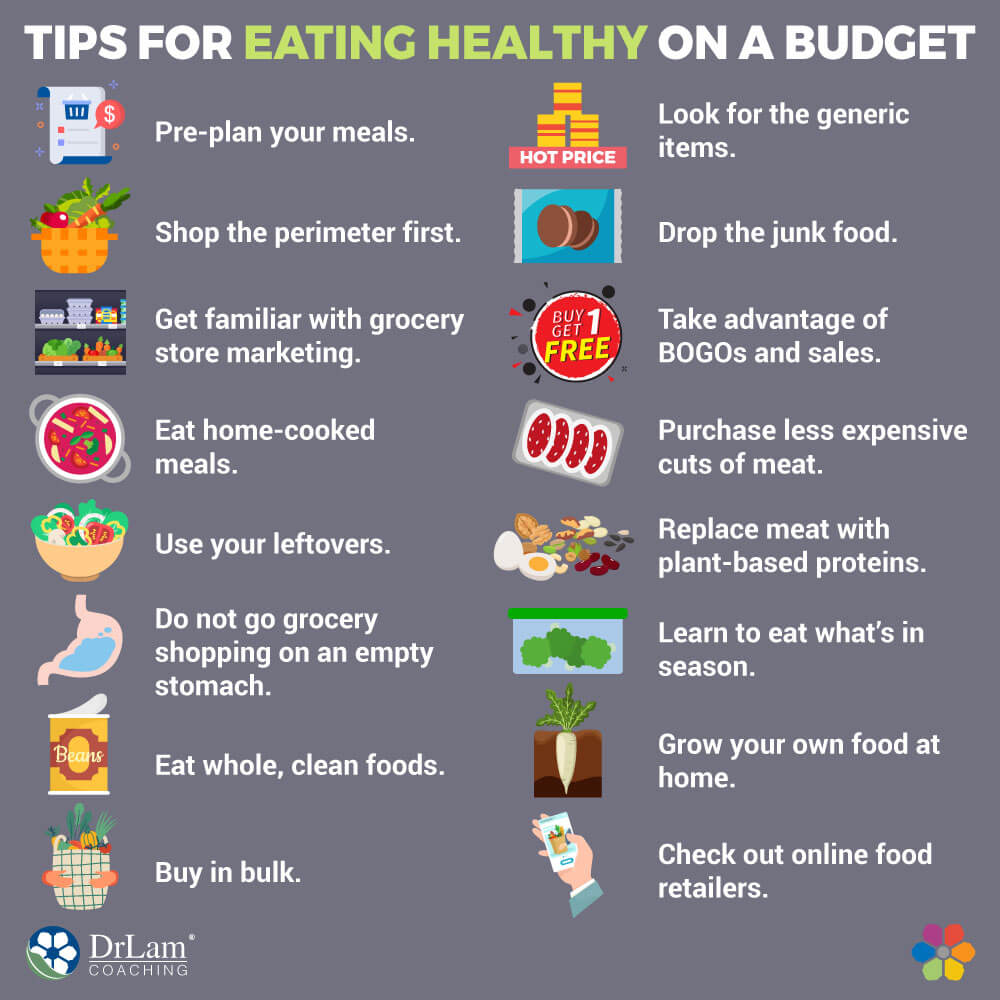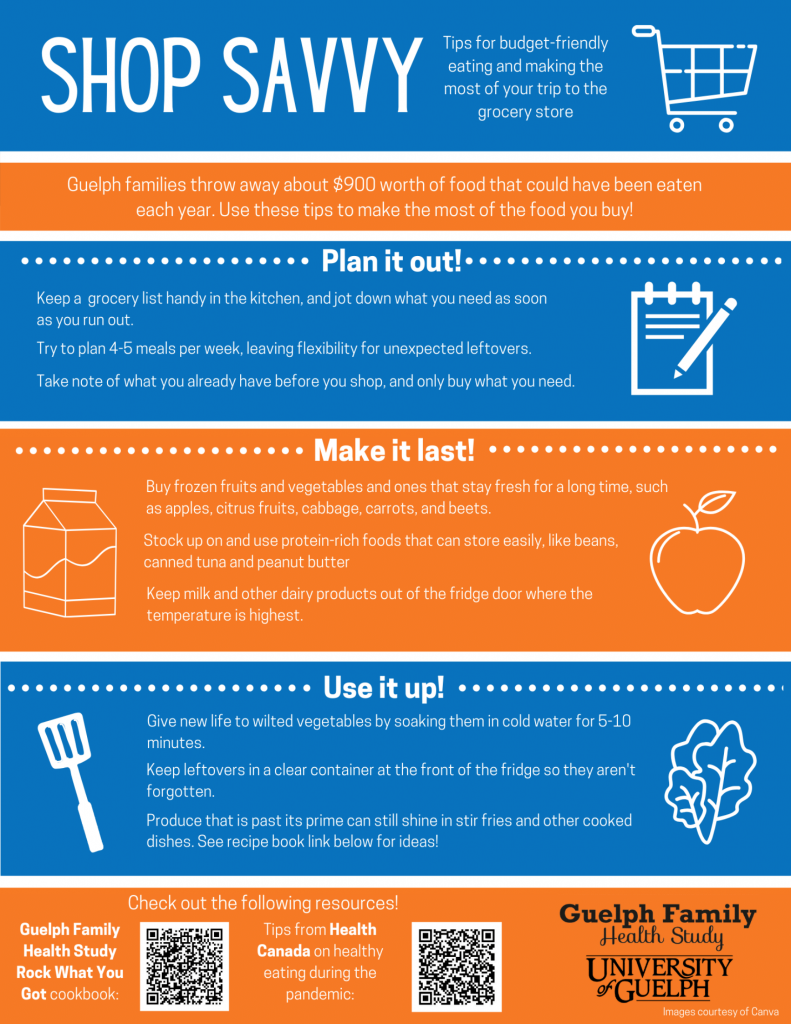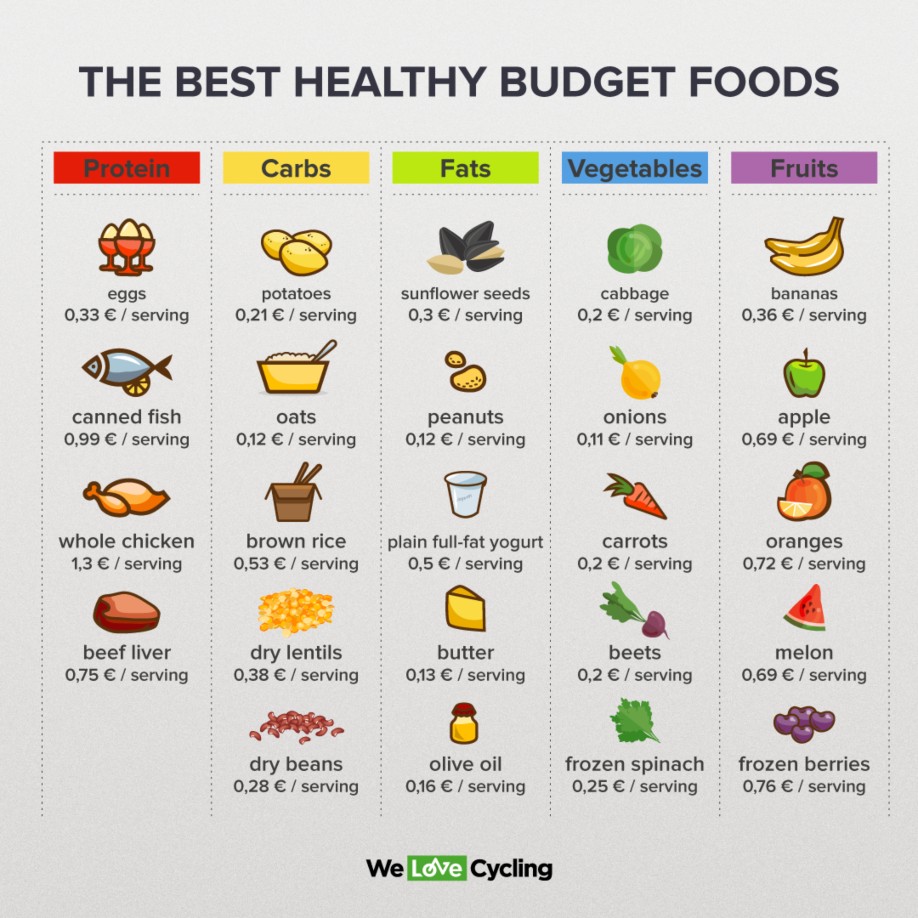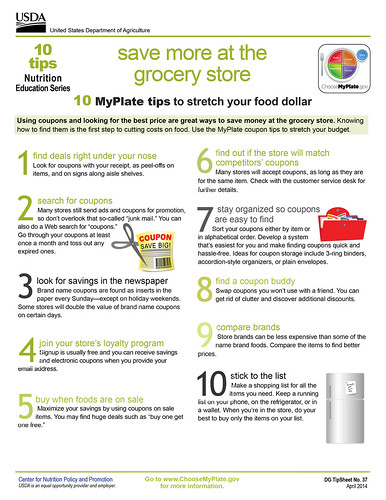In today’s fast-paced world, it can often feel challenging to maintain a healthy lifestyle while also managing a tight budget. However, fret not, because I am here to share some valuable tips and tricks to help you navigate the realm of healthy eating on a budget. By making small yet impactful changes to your shopping habits and meal planning, you can nourish your body with wholesome, nutritious foods without breaking the bank. So, grab a pen and paper, and let’s embark on this journey towards a healthier and budget-friendly lifestyle together!

1. Planning Your Meals
1.1 Creating a Weekly Meal Plan
When it comes to eating healthy on a budget, one of the most important steps is creating a weekly meal plan. Planning your meals in advance allows you to have a clear idea of what you will be eating throughout the week, which helps eliminate the temptation of unhealthy and costly last-minute takeout or fast food options. Start by deciding on your main dishes for each day of the week and then fill in the accompanying sides. This way, you can ensure that your meals are balanced and nutritious. Additionally, meal planning allows you to make a comprehensive shopping list, saving you time and money at the grocery store.
1.2 Making a Shopping List
Once you have your weekly meal plan in place, it’s time to make a shopping list. This list will be your guide when you go to the grocery store and will help you stay focused and avoid impulse purchases. Start by reviewing the recipes and meals you’ve planned for the week, and write down all the ingredients you will need. Be sure to check your pantry and refrigerator to see if you already have some of the items on your list. This will prevent you from buying duplicates and wasting money. Having a well-organized shopping list ensures that you only purchase what you need and helps you stick to your budget.
2. Shopping Smart
2.1 Buying in Bulk
Buying in bulk can be a great way to save money on groceries in the long run. Items such as rice, pasta, beans, nuts, and dried fruits can often be purchased in larger quantities at a lower cost per unit. By buying these staple items in bulk, you can stock up and ensure that you always have these essentials on hand without breaking the bank. Just make sure that you have enough storage space to accommodate your purchases. Buying in bulk minimizes packaging waste and is not only a cost-effective choice but also an environmentally friendly one.
2.2 Choosing Seasonal and Local Produce
Opting for seasonal and local produce is not only a good choice for the environment but also for your wallet. When fruits and vegetables are in season, they are typically more abundant, which leads to lower prices. Local produce, on the other hand, doesn’t have to travel long distances to reach your plate, reducing transportation costs and potentially leading to fresher and more nutritious options. Visit your local farmer’s market or join a community-supported agriculture (CSA) program to enjoy a wide variety of fresh and affordable produce while supporting local farmers.
2.3 Comparing Prices
To make the most of your budget, it’s essential to compare prices before making a purchase. Take the time to visit different grocery stores in your area and compare the prices of items on your shopping list. This might seem like an extra effort, but it can potentially save you a significant amount of money. Online grocery shopping platforms can also be helpful in comparing prices from various retailers without leaving your home. Keep an eye out for sales and promotions as well, and consider buying generic or store-brand products instead of branded ones. In many cases, the quality is comparable, but the price difference can be substantial.
2.4 Avoiding Impulse Buys
One of the biggest challenges when grocery shopping on a budget is avoiding impulse buys. It’s easy to get distracted by flashy packaging or persuasive marketing tactics, leading you to purchase items that are not on your shopping list. To combat this, try to shop when you’re not hungry, as an empty stomach can make you more susceptible to impulse purchases. Stick to your list and stay focused on the items you need. If you come across something that catches your eye but isn’t essential, give yourself a pause and think about whether it’s worth the extra cost. By resisting impulse buys, you can stay within your budget and maintain a healthy eating plan.

3. Cooking at Home
3.1 Preparing Meals in Advance
Preparing meals in advance can be a game-changer when it comes to eating healthy on a budget. By setting aside some time each week to cook and portion out your meals, you not only save money but also save time and energy throughout the week. Consider dedicating a few hours on the weekends to prepare large batches of your favorite dishes. Portion them into individual containers and refrigerate or freeze them for later use. This way, you’ll always have a healthy meal ready to go, even on the busiest of days. Meal prepping allows you to control the ingredients and portion sizes, helping you stay on track with your nutritional goals.
3.2 Trying Vegetarian or Vegan Options
Incorporating more vegetarian or vegan options into your diet can have both health and budget benefits. Plant-based proteins such as beans, lentils, tofu, and tempeh are generally more affordable than animal proteins. They also tend to have a longer shelf life, making them excellent pantry staples. Experiment with vegetarian or vegan recipes to discover new flavors and textures while keeping your budget in check. By reducing your reliance on expensive meat products and embracing plant-based ingredients, you can enjoy a variety of delicious and nutritious meals without breaking the bank.
3.3 Batch Cooking
Batch cooking is another technique that can help you save money and time in the kitchen. Instead of cooking a single meal at a time, try cooking larger quantities and dividing them into portions to be enjoyed throughout the week. This works particularly well with dishes like soups, stews, curries, and casseroles. By cooking in bulk, you can take advantage of discounts when purchasing ingredients and minimize waste. Leftover meals can be refrigerated or frozen for later consumption, ensuring that no food goes to waste and that you always have a nutritious meal on hand.
3.4 Growing Your Own Herbs and Vegetables
If you have some outdoor space or even a sunny windowsill, consider starting your own herb and vegetable garden. Growing your own herbs and vegetables allows you to have fresh produce at your fingertips and can save you money in the long run. Herbs like basil, parsley, and mint are relatively easy to grow and are much cheaper than buying them at the grocery store. Similarly, vegetables like tomatoes, peppers, and lettuce can thrive in small gardens or pots. Plus, gardening is a rewarding and therapeutic activity that connects you with nature and helps you appreciate the food on your plate even more.
4. Maximizing Nutritional Value
4.1 Opting for Whole Foods
When it comes to nutrition, choosing whole foods is key. Whole foods are minimally processed and retain their natural nutrients, fiber, and beneficial compounds. They are often cheaper per serving compared to highly processed convenience foods. Center your meals around whole grains like brown rice, oats, and quinoa, and incorporate a variety of fruits and vegetables. Instead of buying pre-cut and packaged produce, choose whole fruits and vegetables whenever possible, as they are usually more affordable. Whole foods not only provide better nutritional value but also contribute to a more fulfilling and budget-friendly eating plan.
4.2 Incorporating Legumes and Beans
Legumes and beans are economical and nutritious sources of plant-based protein and fiber. They can be incorporated into a variety of dishes and help stretch your budget while providing essential nutrients. Consider cooking with chickpeas, black beans, lentils, or kidney beans to add substance and flavor to soups, stews, salads, and stir-fries. Dried legumes and beans are usually more affordable than canned ones, but both options are viable choices depending on your budget and convenience. Including legumes and beans in your meals not only improves their nutritional content but also promotes satiety and reduces the need for costly meat-based proteins.
4.3 Choosing Lean Proteins
Protein is an important component of a healthy diet, but it can be expensive if you rely heavily on meat. To keep costs down, consider choosing lean protein sources such as chicken breast, turkey, fish, or eggs. These options are generally more affordable than premium cuts of meat and still provide ample protein and essential nutrients. Incorporate these lean proteins into your meals, using them as a base or complement to other ingredients. By making thoughtful choices about your protein sources, you can balance your budget while maintaining a healthy and satisfying diet.
4.4 Adding Herbs and Spices for Flavor
Adding herbs and spices to your meals is a fantastic way to add flavor and variety without spending much money. Instead of relying on expensive pre-made sauces and marinades, experiment with different combinations of herbs and spices to enhance the taste of your dishes. Cumin, paprika, turmeric, garlic powder, and cinnamon are just a few examples of versatile and cost-effective seasonings that can elevate the flavor profile of your meals. Fresh herbs like basil, cilantro, and rosemary can also be grown at home or purchased in small quantities, adding a burst of freshness to your dishes. By getting creative with herbs and spices, you can make every meal an exciting and budget-friendly culinary experience.

5. Tips for Eating Out
5.1 Researching Affordable Options
Eating out doesn’t have to mean breaking your budget or sacrificing your health. With a little bit of research, you can find affordable dining options that offer nutritious and delicious meals. Look for restaurants that offer lunch or dinner specials, as they often provide a more budget-friendly menu without compromising on quality. Check online for customer reviews, which can give you an idea of the establishment’s prices and portion sizes. Additionally, consider exploring ethnic cuisine, as it can often be more affordable compared to Western dining establishments. By researching and being strategic, you can enjoy eating out without overspending.
5.2 Making Healthy Choices from the Menu
When dining out, making healthier choices from the menu can help you stay on track with your budget and nutritional goals. Opt for dishes that are based on lean proteins, whole grains, and plenty of vegetables. Avoid options that are deep-fried or covered in heavy sauces, as these tend to be higher in calories and cost. Ask for dressings and sauces to be served on the side so that you can control the amount you use. Additionally, consider splitting a larger portion with a friend or saving half for later, as restaurant portions are often larger than what you would serve at home. By making thoughtful choices, you can enjoy a satisfying and nutritious meal while staying within your budget.
6. Reduce Food Waste
6.1 Proper Food Storage
Reducing food waste is not only good for the environment but also for your budget. Properly storing your food can help extend its shelf life and prevent it from spoiling prematurely. Invest in reusable food storage containers that are airtight and keep your perishable items in the refrigerator at the appropriate temperatures. Utilize your freezer to store leftovers and bulk-cooked meals, ensuring they don’t go to waste. By taking the time to properly store your food, you can minimize spoilage and make the most of your groceries.
6.2 Using Leftovers
Leftovers are a goldmine when it comes to saving money and reducing food waste. Instead of letting them languish in the back of the refrigerator, get creative and repurpose them into new meals. Leftover roasted chicken can become the star ingredient for a quick stir-fry, while cooked vegetables can be transformed into a flavorful frittata or a hearty soup. Mix and match ingredients to create unique and exciting dishes, and don’t be afraid to experiment. By using leftovers, you not only stretch your budget but also discover new flavor combinations.
6.3 Composting
Composting is an eco-friendly way to reduce food waste and create nutrient-rich soil for your garden. Instead of throwing vegetable scraps and other food waste into the garbage, start a compost pile or invest in a composting bin. This allows the organic matter to decompose naturally, reducing the amount of waste that goes to landfills. By composting, you contribute to the health of the environment and can eventually use the nutrient-rich compost to grow your own herbs and vegetables, further supporting your budget-friendly and sustainable eating habits.

7. Taking Advantage of Sales and Coupons
7.1 Staying Informed about Sales
Keeping yourself up to date with sales and promotions is an excellent way to stretch your budget. Subscribe to newsletters or follow your favorite grocery stores on social media to receive notifications about upcoming sales and special offers. Plan your meals and shopping list around these sales, taking advantage of discounted items. Sometimes, buying in bulk during a sale can give you even more significant savings in the long run. With a little bit of planning and awareness, you can make the most of the sales and get the most bang for your buck.
7.2 Utilizing Coupons and Promotions
Coupons and promotions are another surefire way to save money on your grocery bill. Keep an eye out for coupons in newspapers, magazines, or online coupon websites. Many grocery stores also have their own loyalty programs that offer exclusive discounts or rewards. Take advantage of these promotions by clipping coupons or digitally saving them to your smartphone. Just be mindful not to let the allure of coupons tempt you into buying items you wouldn’t normally purchase. Stick to your shopping list and use coupons only for the items you need to truly maximize your savings.
8. Rethinking Beverages
8.1 Choosing Water over Sugary Drinks
One often overlooked aspect of healthy eating on a budget is the choice of beverages. Swapping sugary drinks for water is not only a healthier choice but also a cost-effective one. Sugary drinks, like sodas and fruit juices, can be expensive and often provide little nutritional value. On the other hand, water is readily available, typically free, and essential for staying hydrated. If you find plain water boring, try infusing it with fruits, herbs, or a splash of citrus juice for added flavor. By choosing water over sugary drinks, you can save money while promoting your overall health.
8.2 Making Your Own Flavored Drinks
Instead of buying expensive pre-made flavored drinks, consider making your own at home. Experiment with different combinations of fruits, herbs, and spices to create refreshing and flavorful concoctions. Mix fresh fruit slices, such as lemon, cucumber, or berries, with a sprig of mint or basil and infuse them in a pitcher of water overnight. You can also brew your own herbal iced tea by steeping herbal tea bags in cold water. These homemade flavored drinks not only cost much less than store-bought alternatives, but they also allow you to control the amount of sugar and other additives.

9. Cooking Techniques
9.1 Steaming
Steaming is a simple and healthy cooking technique that can help you maximize the nutritional value of your meals. It involves cooking food over boiling water, using steam to gently cook the ingredients without adding excess fat or calories. Steaming helps retain the natural flavors, colors, and nutrients of the food, resulting in vibrant and delicious dishes. Invest in a steamer basket or use a metal colander placed over a pot of boiling water to steam vegetables, fish, or even dumplings. Steaming is a great budget-friendly cooking technique that requires minimal equipment and preserves the integrity of your ingredients.
9.2 Roasting
Roasting is a versatile cooking technique that can be applied to a wide range of ingredients, from vegetables to meats. It involves cooking food in the oven at a high temperature, allowing for caramelization and intensification of flavors. Roasting requires little effort and enhances the natural sweetness and textures of the ingredients. It’s an excellent way to turn affordable root vegetables, like potatoes, carrots, and beets, into delicious and satisfying dishes. Additionally, roasting inexpensive cuts of meat or poultry can yield tender and flavorful results. By mastering the art of roasting, you can elevate your meals while keeping your budget intact.
9.3 Stir-Frying
Stir-frying is a quick and economical cooking technique that can help you create delicious and nutrient-packed meals. It involves sautéing bite-sized pieces of ingredients in a hot pan or wok, often with a small amount of oil and high heat. Stir-frying allows for a rapid cook time, preserving the texture and color of the ingredients while sealing in their flavors. The high heat also ensures that your meal is cooked evenly and quickly. Stir-frying is an excellent way to use up leftover proteins and vegetables, enabling you to create a well-balanced and budget-friendly dish in no time.
10. Educate Yourself
10.1 Researching Nutritional Information
Educating yourself about nutrition is crucial for making informed choices about your diet. Take the time to research nutritional information, such as the benefits of different food groups or the recommended daily intake of certain nutrients. Understanding the nutritional value of the food you consume can help you make healthier and more budget-friendly choices. Look for reputable sources of information, such as health publications, government websites, or consult with a registered dietitian if you have specific dietary concerns. By becoming knowledgeable about nutrition, you can navigate the grocery store and plan your meals with confidence.
10.2 Learning Cooking Skills
Investing in your cooking skills is an excellent way to improve your ability to create healthy and budget-friendly meals. Consider taking cooking classes, watching cooking tutorials online, or following reputable recipe blogs. Learning essential cooking techniques and gaining confidence in the kitchen enables you to experiment with different ingredients and flavors. Developing your cooking skills also allows you to transform simple and affordable ingredients into delicious and nutritious meals. With practice and patience, you can become a savvy home cook who can whip up budget-friendly gourmet dishes in no time.
In conclusion, eating healthy on a budget is entirely achievable with a little bit of planning and creativity. By following these tips and tricks, such as meal planning, shopping smart, cooking at home, maximizing nutritional value, and taking advantage of sales and coupons, you can nourish your body while keeping your wallet happy. Remember to educate yourself about nutrition and invest in your cooking skills to make the most of your ingredients and create exciting meals. With these strategies, you can embrace a healthy and budget-friendly lifestyle that benefits both you and your bank account.


